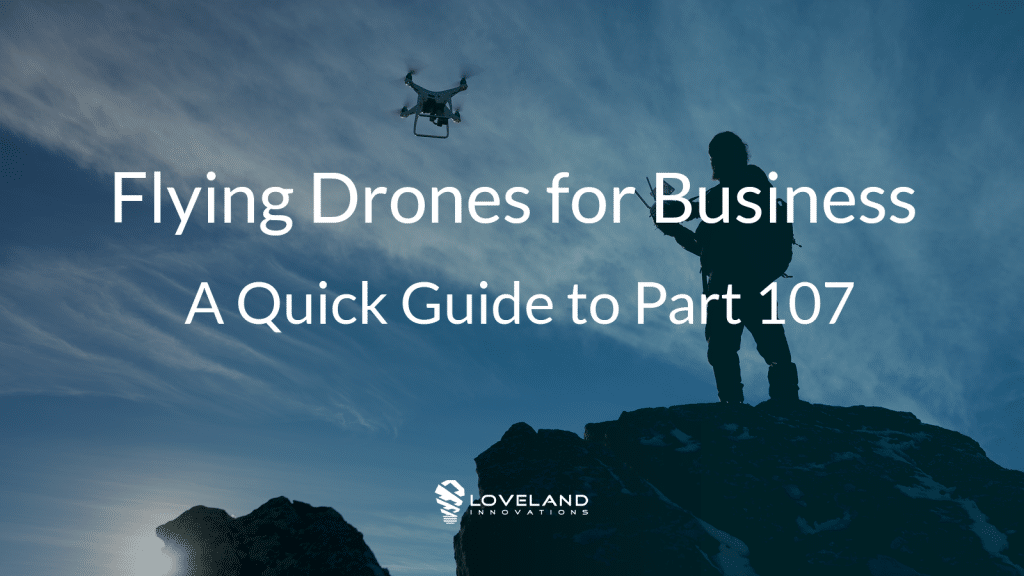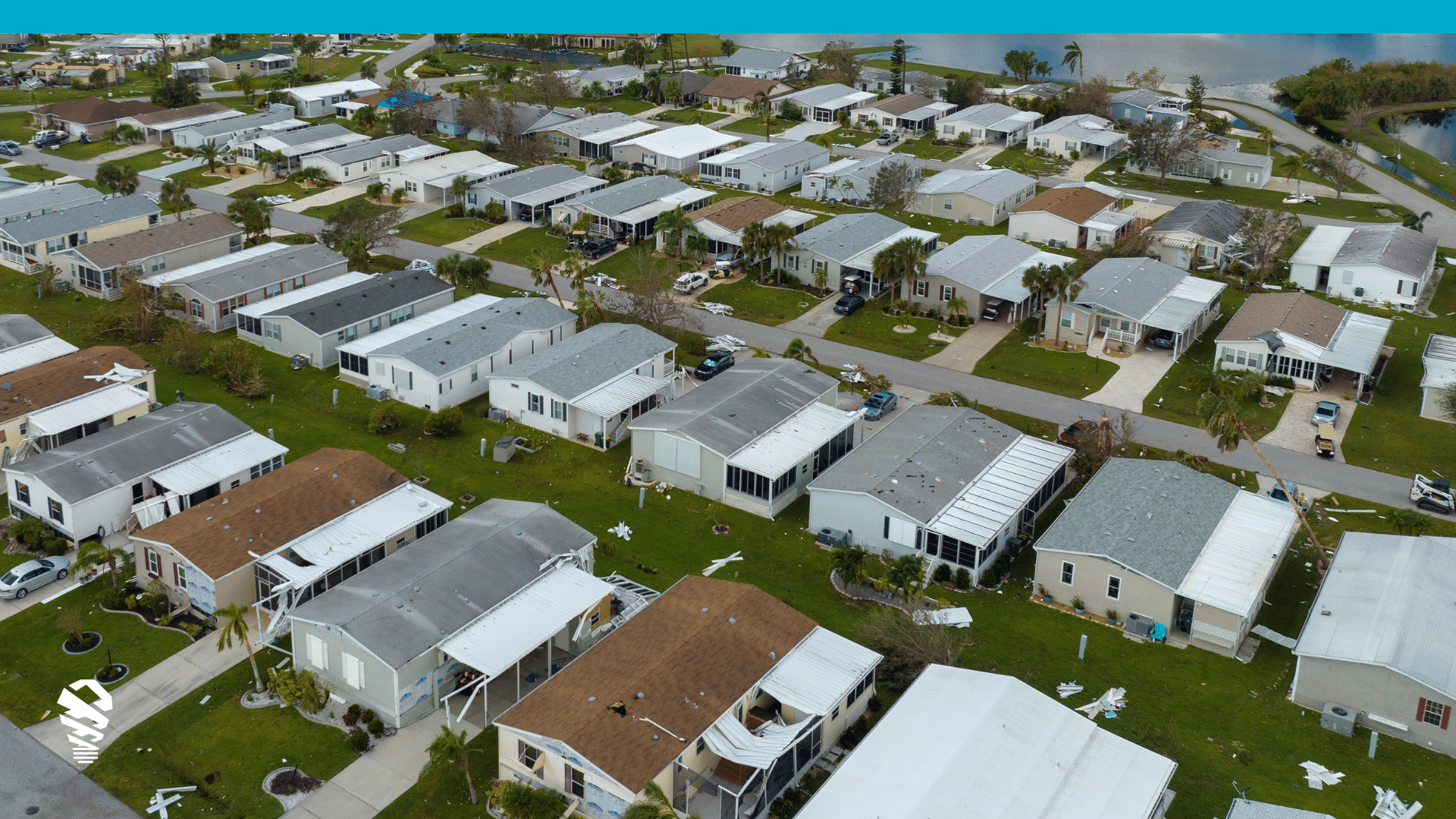Businesses in industries like construction, insurance, and solar are using drones for everything from property claims to roofing bids, site surveys, and more. With benefits ranging from more safety to better efficiency and more consistent data capture, it’s easy to see why so many are taking to the skies. But what does it take to get started? In this piece, we’ll go through everything you need to know about regulations and certifications for commercial unmanned aerial vehicle use.
Regulation Basics: Part 107 and Certification
Before you can fly an unmanned aerial vehicle (UAV) commercially, you need to go through a certification process. To many, the thought of a certification sounds daunting, but the process for gaining a remote pilot certificate is actually fairly simple. It’s all outlined by the Federal Aviation Administration (FAA) under CFR 14, Part 107. These rules cover who can fly as well as how and when they can fly. Understanding the basic rules outlined in part 107 is an important part of the process, but you must also:
- Be at least 16 years old.
- Be able to read, write, speak, and understand English.
- Be in a physical and mental condition to safely fly a UAS.
- Get 70% or higher on a 60-question aeronautical knowledge test at an FAA-certified testing facility ($175 test administration fee).
Studying for the Test
The aeronautical knowledge test consists of a few topics. Since questions vary from test to test, the percentage of the test composed of each topic will be different for each person who takes it. You must demonstrate knowledge on the following topics:
- Regulation (15-25%) – CFR 14 Part 107 rules.
- Airspace and requirements (15-25%) – Reading aeronautical charts, being familiar with airspace classifications.
- Weather (11-16%) – Understanding weather charts, patterns, and more.
- Loading and performance (7-11%) – Understanding how an aircraft flies and what factors affect aerial performance.
- Operations (35-45%) – Knowing the basics of safe UAV operations.
Passing Your Part 107 Aeronautical Knowledge Test
There are typically two ways people study for the aeronautical knowledge test.
Use Free Resources
There are many resources available online for free. The FAA has study guides to help you pass the aeronautical knowledge test and there are a number of YouTube videos that walk through key concepts. The benefit to this approach is that it’s free, though without the structure of a more formal course, it can be more time-consuming and less thorough.
Get Courseware
Alternatively, there are a number of detailed online courses that walk through everything you need to know to get Part 107 certified. Many include practice tests, quizzes, and printable assets to aid you as you study. Thanks to a more thorough and structured approach, a huge percentage of pilots who use our friends at Drone Pilot Ground School pass their aeronautical knowledge test the first time.
Scheduling the Test
When you’re ready to take the test, you’ll simply schedule the test at an FAA-certified testing facility and take it. With 684 across the United States, it’s easy to find a testing facility near you. For a full list of testing facilities, see this page.
After You Pass the Test
After passing your test, you’ll receive a 17-digit Knowledge Test Exam ID. Using this ID, you’ll file a form online using the FAA’s electronic Integrated Airman Certificate and/or Rating Application system (IACRA). Your testing facility will provide you with all the information you need. After filing, you’ll receive a temporary remote pilot certificate you can print and keep with you while you wait for your permanent certificate to arrive in the mail (this can take six weeks or so).
Part 107 FAQs
Can I fly without a certification?
If you’re flying for the purposes of business, the answer is no. But if you’re flying for fun or recreation, you can fly under the FAA’s hobbyist rules, which require you to register your drone and follow some basic guidelines (such as flying at or below 400 ft. in uncontrolled airspace). As you familiarize yourself with drone operations, it’s wise to fly recreationally and practice manual maneuvers to become more capable. Note that there is no portion of the aeronautical knowledge test which requires you to demonstrate your flying abilities.
Is it hard to get certified?
In general, no. Studying to get a remote pilot certificate is a little more complex than getting a driver’s license, and the material is actually a lot of fun to learn. If you study the material carefully and spend time going through practice tests, you’ll do great.
How long does it take to get certified?
We’ve heard of people studying and passing the test after a few solid nights of studying. We’ve also heard of people taking a few weeks to pass because they can only study a little each day. In general, however, you can pass the test after studying between 10 and 20 hours.
How much does it cost to get certified?
The administration fee for the test is $175, which goes directly to the testing facility. This is the only cost for the certification itself, but hardware, courseware, and so forth will obviously be extra.
Where do I take the test?
You must take your test at an FAA-certified testing facility, of which there are hundreds. For a full list of testing facilities as managed by the FAA’s testing partner, see this page.



![How to Measure a Roof With a Drone [Updated April 2023]](https://www.lovelandinnovations.com/wp-content/uploads/2024/04/How-to-Measure-a-Roof-With-a-Drone-Updated-April-2023.png)




